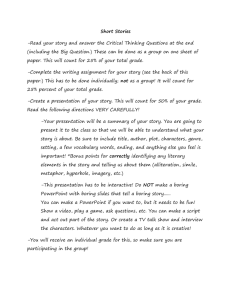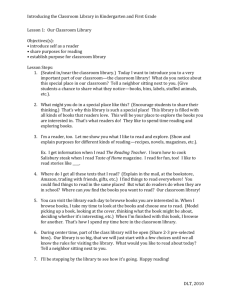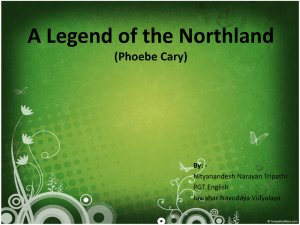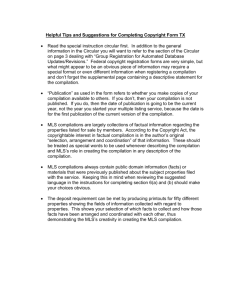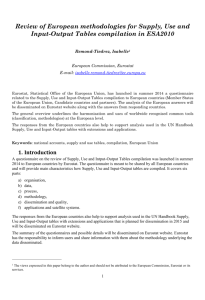Strategies for Organizing a Paper
advertisement
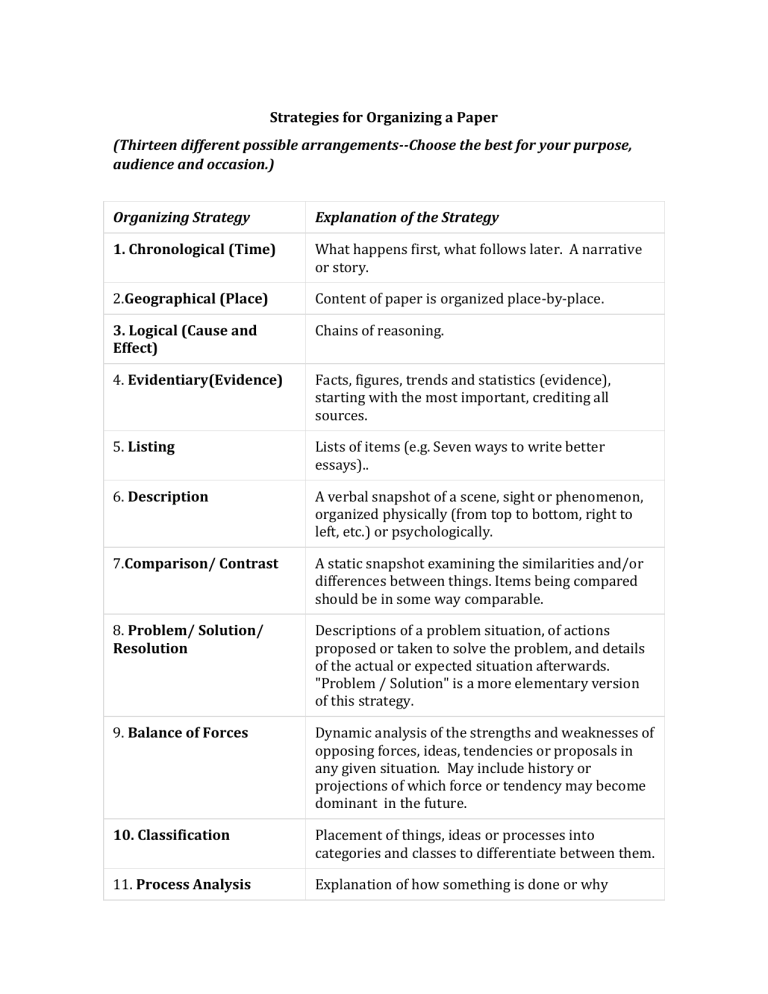
Strategies for Organizing a Paper (Thirteen different possible arrangements--Choose the best for your purpose, audience and occasion.) Organizing Strategy Explanation of the Strategy 1. Chronological (Time) What happens first, what follows later. A narrative or story. 2.Geographical (Place) Content of paper is organized place-by-place. 3. Logical (Cause and Effect) Chains of reasoning. 4. Evidentiary(Evidence) Facts, figures, trends and statistics (evidence), starting with the most important, crediting all sources. 5. Listing Lists of items (e.g. Seven ways to write better essays).. 6. Description A verbal snapshot of a scene, sight or phenomenon, organized physically (from top to bottom, right to left, etc.) or psychologically. 7.Comparison/ Contrast A static snapshot examining the similarities and/or differences between things. Items being compared should be in some way comparable. 8. Problem/ Solution/ Resolution Descriptions of a problem situation, of actions proposed or taken to solve the problem, and details of the actual or expected situation afterwards. "Problem / Solution" is a more elementary version of this strategy. 9. Balance of Forces Dynamic analysis of the strengths and weaknesses of opposing forces, ideas, tendencies or proposals in any given situation. May include history or projections of which force or tendency may become dominant in the future. 10. Classification Placement of things, ideas or processes into categories and classes to differentiate between them. 11. Process Analysis Explanation of how something is done or why something has happened or is happening. May include projections of future steps in a process. 12. Compilation A brief consolidation of information about a single subject or question from several other sources, written in your own words and crediting the original sources. Sources should be similar in reliability, subject and scope. 13. Summary A brief condensation of a single other, longer source, written in your own words and crediting the original source. Advantages and disadvantages of the various strategies… Strategy Advantages Disadvantages 1. Chronological (Time) Easy to write and to follow. Sometimes too simplistic, may lack explanation. 2. Logical (Cause and Effect) Simple, clean. Cold, unfeeling. Chains of reasoning may be too complicated for readers to understand. May become boring. 3. Evidentiary Factual, convincing. Facts, figures, trends and statistics may sound lawyer-like and lack warmth, 4. Listing Easy to write and understand. Boring if done too often. Oversimplifies complex issues and situations. 6. Description Picturesque, easy for reader to imagine. Describes situations in a static form, rather than developing processes (like a painting or photo rather than the ongoing narrative that is reality). 7. Comparison/ Contrast Easy to understand similarities and contrasts between two items. Most often describes a static situation, rather than a developing relationship. Becomes too complex to understand if more than two items are compared or contrasted together. May oversimplify complex relationships. 8. Problem/ Solution/ Easy to understand story of events or Long descriptions or stories may lose the attention of readers. If resolution is Resolution plans. not yet complete, may get into guessing instead of merely information. 9. Balance of Forces Very easy for readers to understand opposing forces. Becomes too complex if more than two primary forces are involved in any opposing situation. Future projections may involve guessing. 10. Classification Simple to read and write. Boring. 11. Process Analysis Explains dynamic processes clearly. Explanation can easily become too detailed or complex for readers to follow. Analysis of future steps in a process may involve guessing. 12. Compilation Allows reader to access information from several sources, compare what they say. Not original, only putting together what other sources say. If sources are not comparable, compilation becomes meaningless. 13. Summary Allows reader to quickly read the important part of a longer source. Not original. Can be boring. If done poorly, a summary can actually falsify the original source.

